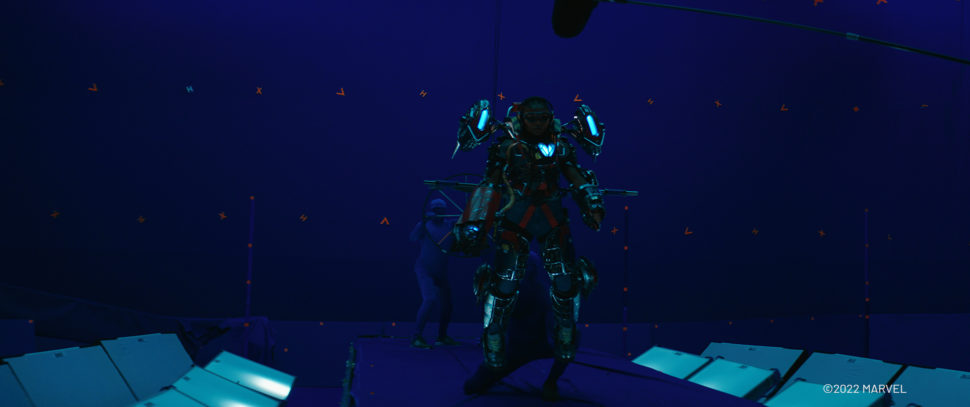
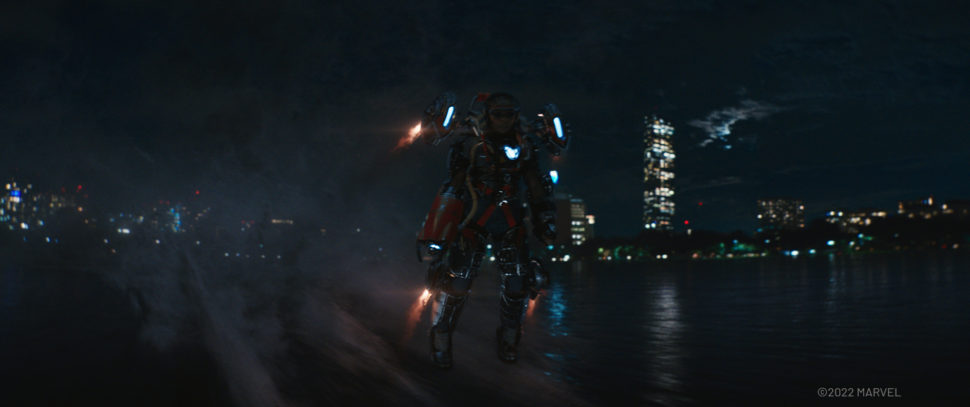
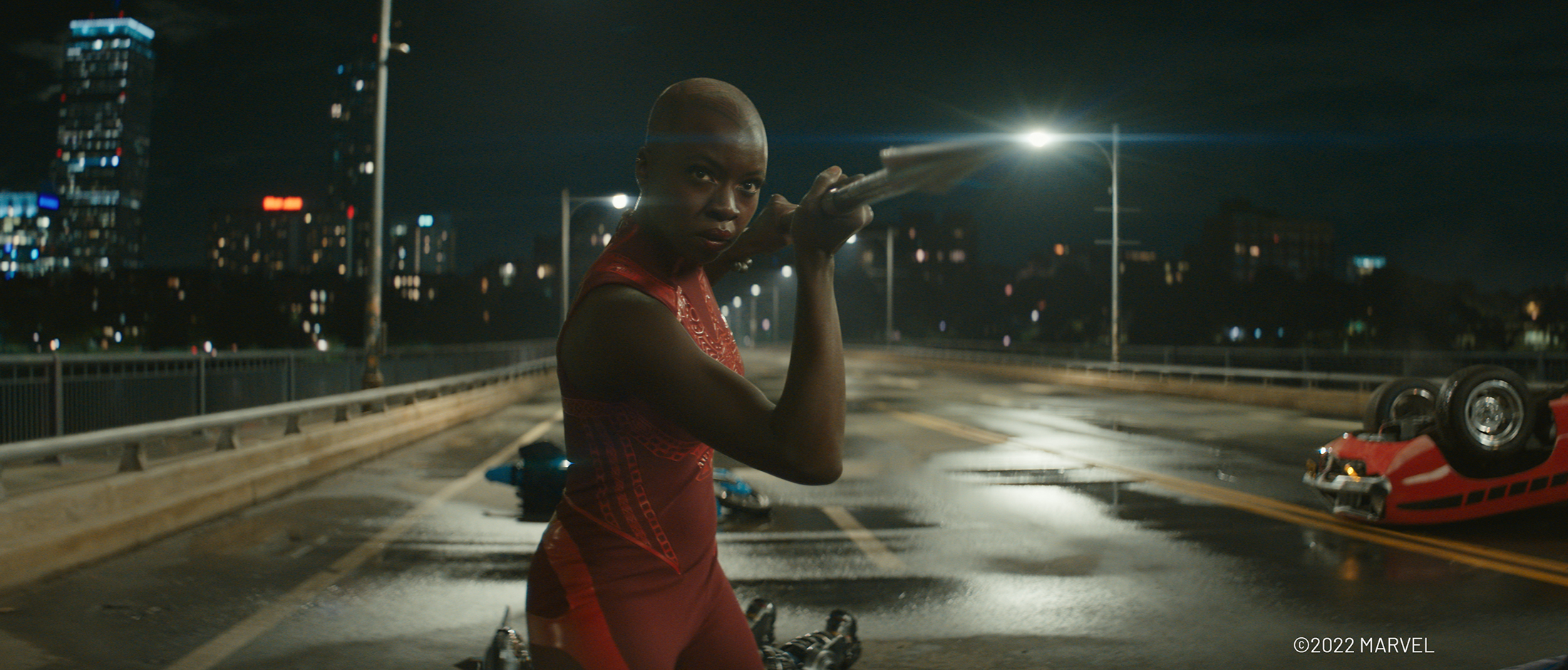
Cinesite’s London and Montreal studios together delivered close to 400 visual effects, with the London division delivering a single 10-minute sequence and Montreal a range of sequences across Black Panther: Wakanda Forever. VFX supervisor for London was Ben White and for Montreal Jennifer Meire.
Released 11th November 2022, the eagerly awaited sequel to the original Black Panther has dominated international box offices as the highest grossing release of the year. The sequel delivers spectacular locations, fantastic performances and exhilarating action sequences, as audiences might expect based on the high bar set by the original.
Wakanda Forever is set in the wake of King T’Challa’s death, as the leaders of the kingdom of Wakanda fight to protect their nation from invading forces. Cinesite’s contribution to the production represents one of our largest deliveries for Marvel to date, and some of our most complex visual effects.
The sequence completed by the London team encompasses a night-time chase through (and above) the streets of Boston, a fight between Okoye and the subterranean people of the Talokan and the subsequent crime agency examination of the fight scene the following day. The complex range of work includes CG Talokanils, Riri airborne in her home-made suit, her crash back to earth, partial and full CG environments, extensive clean-up and a stunning hydrobomb explosion which launches Shuri and Okoye into the air and slams Riri into the ground with a slow-motion blast of water energy.
The most complex visual effects in the initial chase portion of the sequence were required for aerial shots of Riri. These required a range of techniques and approaches, sometimes augmenting the practical suit which the actress wore in plate footage, and in other instances replacing everything except the actress’ face. The CG suit asset was built to a very high level of detail and required very precise roto-animation ,enabling the addition of engine jets, smoke and heat haze, as well as any relighting or lighting interaction required for its components and surfaces.
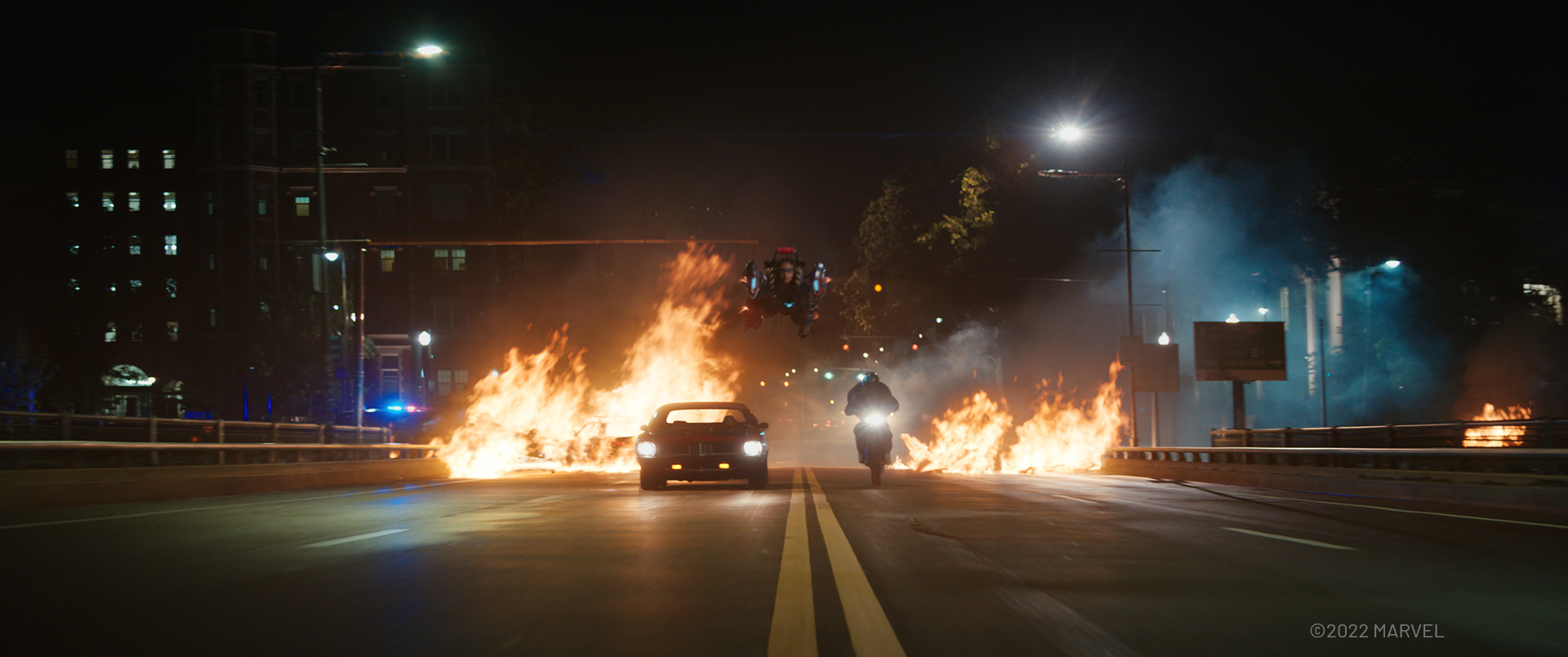
There are two major explosions at the end of the chase. The first, caused by a drone hitting a Boston bridge, required extensive augmentation of a pyrotechnic plate with multiple layers of CG, including debris, impact sparks and cars blown away from the point of impact.
The second, one of the most spectacular shots in the film, shows the impact of a hydrobomb thrown by the approaching Talokanil upon three vehicles on the bridge; Okoye in a Barracuda, Shuri on a motorbike, and Riri flying in her suit overhead.
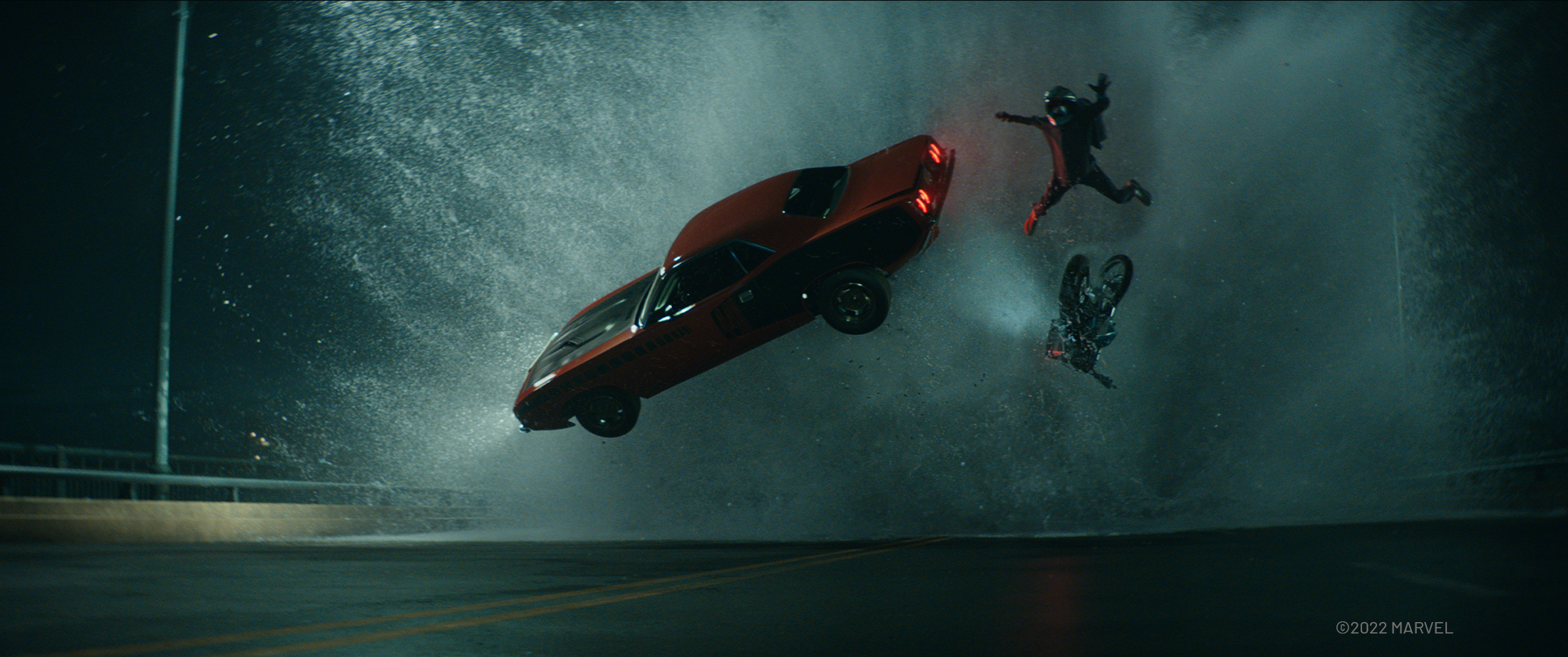
The bomb rolls across the road surface beneath the car, bursting and unleashing a huge curtain of water and vapour which launches both car and motorbike. A plate filmed by the production was ultimately only used as reference for what was an almost entirely computer generated shot. Multiple layers of FX simulation were required, from high-velocity sheets of water at the explosion’s core, to foam, spray, splashes, vapour and droplets on all of the vehicles and road furniture, not to mention the soaked road surface with corresponding reflections in the entire sequence post-detonation.
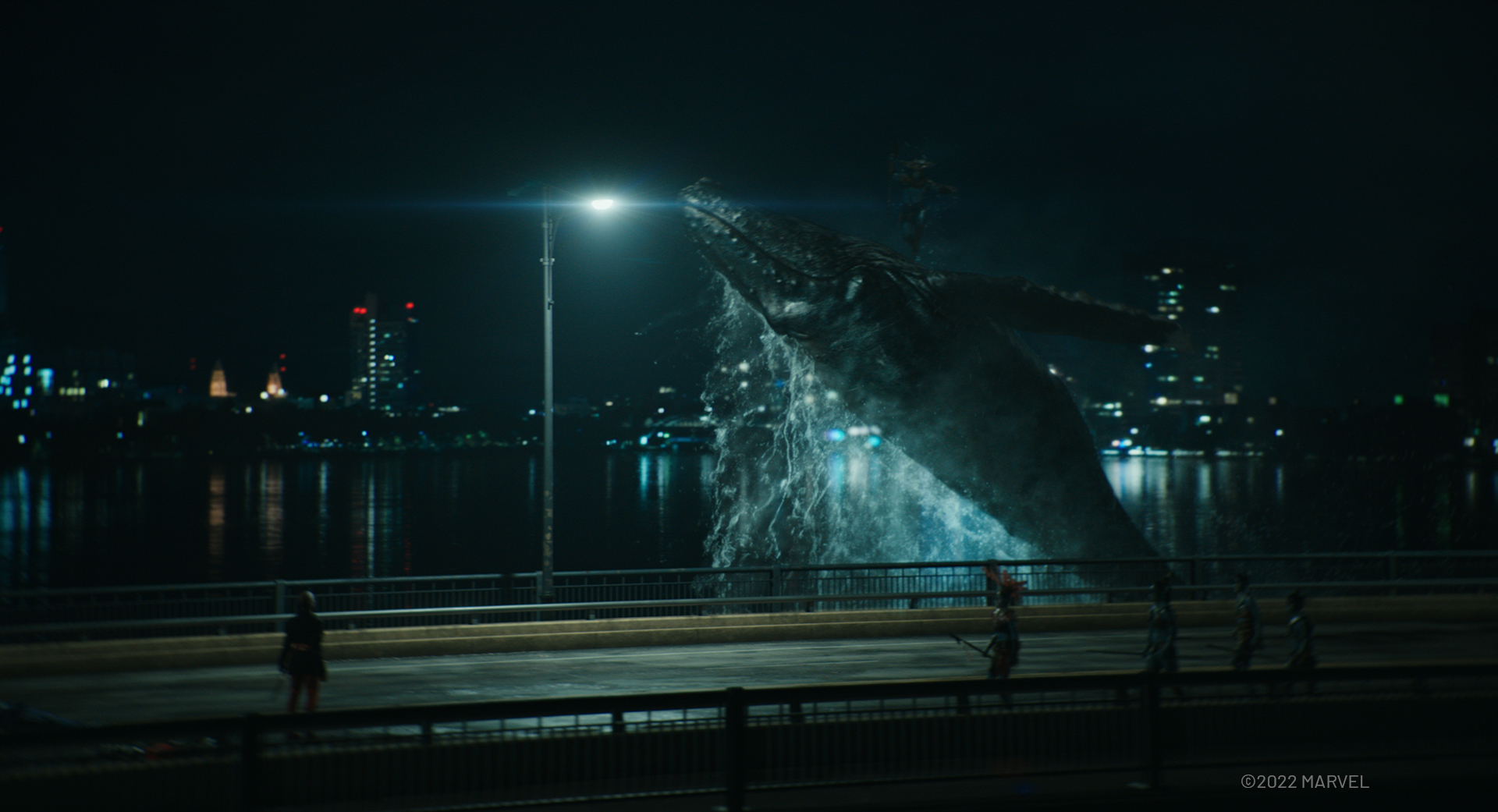
The bomb portents the spectacular arrival of the Talokanil on the backs of whales, jumping down onto the surface of the bridge in front of Okoye. The whales are of course entirely computer generated, as is the river they breach, the spray flying off their surfaces, and the jumping and landing Talokanil.
Invisible visual effects are intrinsic to the subsequent fight sequence, where Okoye single-handedly battles the assembled enemies with her vibranium spear. All the Tolokan wear rebreathers filled with water which were digital throughout. Both the lead female Talokanil Namora and alpha male Attuma wear spectacular headdresses which required extensive visual effects. Attuma’s hammerhead shark style is CG in most shots and Namor’s crown of lionfish fins was also heavily augmented or fully replaced. Extensive clean-up was also required throughout the fight to replace actors’ feet (filmed wearing protective footwear) and also to remove physio tape.
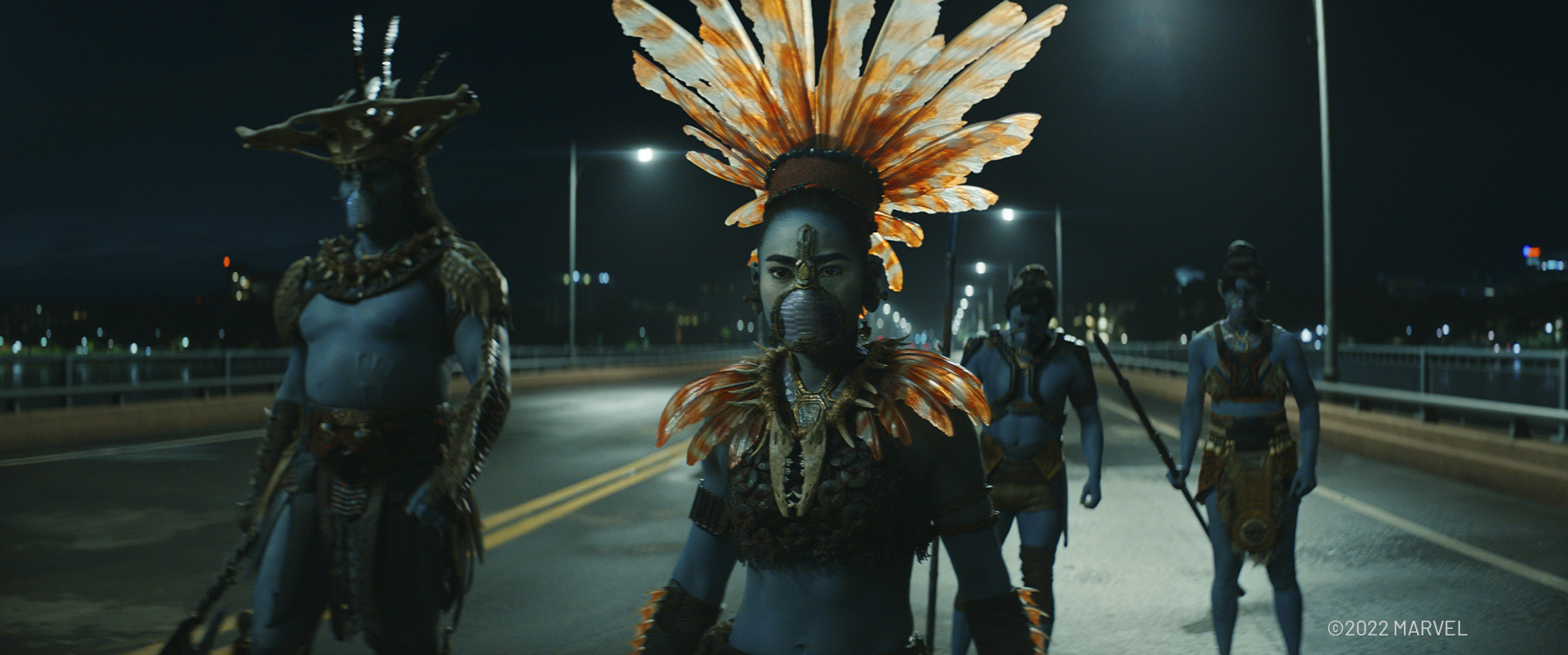
Since the original sequence was filmed on a large outdoor sound stage with a full scale section of the bridge against green screen, the environment beyond was also entirely computer generated, with CG bridge extension, CG water and 2.5D panorama covering 360 degrees. Some shots in the sequence were filmed at a later date at a different location, so it was also necessary to replace the road surface beneath the actors feet and ensure that the lighting and all other aspects of the shots were consistent throughout the entire sequence. Compositing was made more complex by ever present flashing police lights , wet surfaces and the multiple elements required for the sequence. Particular attention was also paid to matching the anamorphic lens qualities which helps the entire sequence to appear as if shot in camera.
Cinesite’s team also created what appears to be the VFX-free following sequence, set on the same bridge the day after the battle, where the FBI are examining the evidence. Also filmed on the exterior soundstage the natural light was of great advantage, however the set required significant clean up in terms of rigging, machinery and adjustments to the road surface. The outer parts of the bridge were recreated, as was the river surface, walkways, bridge, lampposts etc. All were recreated with reference to huge amounts of reference data supplied by production, from array footage to LIDAR scans, photogrammetry and SLR photography.
The Montreal team delivered a range of sequences including the extensive Mining Mission, where a full CG cargo ship was built based on reference supplied by the production. Full water simulations were required throughout, integrating ships, digidoubles and even a crashing helicopter into the ocean environment.
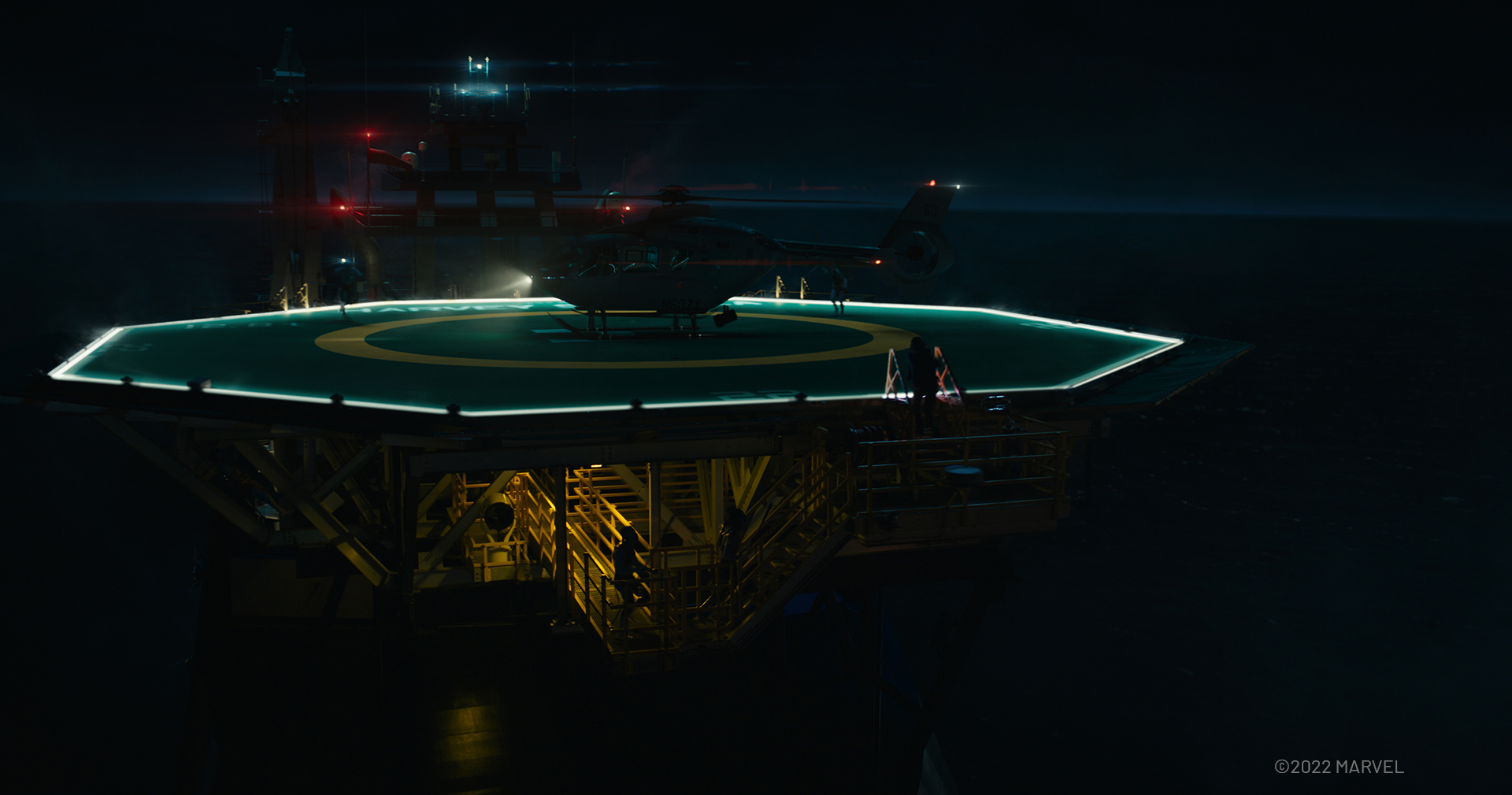
The most complex visual effect in this sequence was the final helicopter crash, which was created as a close collaboration between the animation and FX teams. The crash had to be timed perfectly and the water simulation also had to be spot on in order to ensure the scale and impact of the shot were convincing. This was achieved by blending CG layers; from the ocean surface to white water particles, and a layer of fine mist to complete the final turbulent look.
The Montreal studio also created visual effects for a flashback sequence to the year 1571, where we find out more about the origins of the Talokanils and Namor. As Namor returns to land to bury his mother, he finds that Spanish colonizers have enslaved the indigenous people so he burns down their settlements and we see a burning hacienda.
From the outset, the intention was to create a dramatic effect. Bright lights were used on set, which made the fire added by the team more intense and sit more convincingly into the live action. The initial approach was to burn the hacienda using FX, but ultimately, the shots were created by adding multiple layers of fire elements to make it more dramatic and photorealistic. Using Nuke, the compositing team created a multi-plane fire effect by projecting practical fire elements onto cards. An additional fluid simulation was created to fill in the negative spaces in the column with floating fire and smoke wisps.
Along with the London team, Montreal also delivered CG Talokanil and other digidoubles. CG vehicles, extensive environments, the recreation of the Zama temple based on actual ruins in Tulum, Mexico. Of the complex shots, the Montreal team worked on CG mouth covering “rebreathers” which the Talokanil wear to enable them to breathe above water, were all among the challenges taken on by the teams.